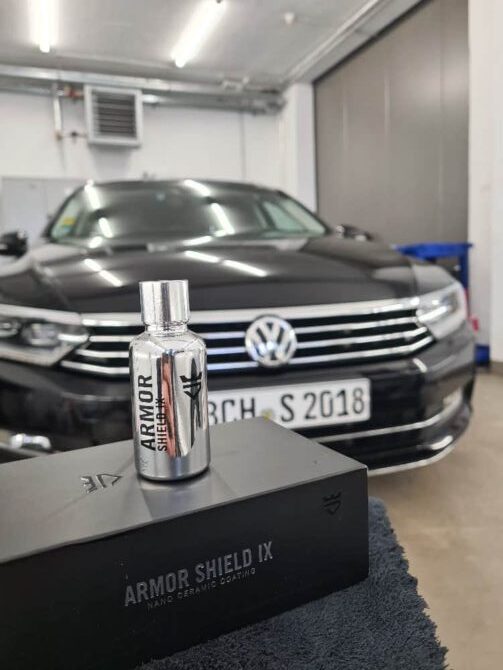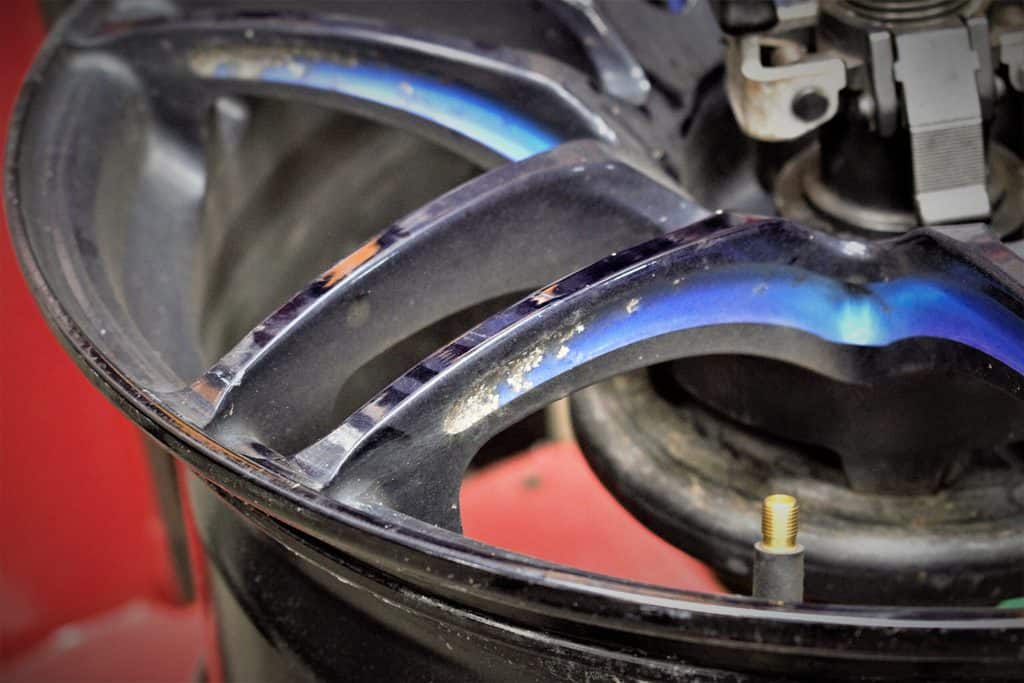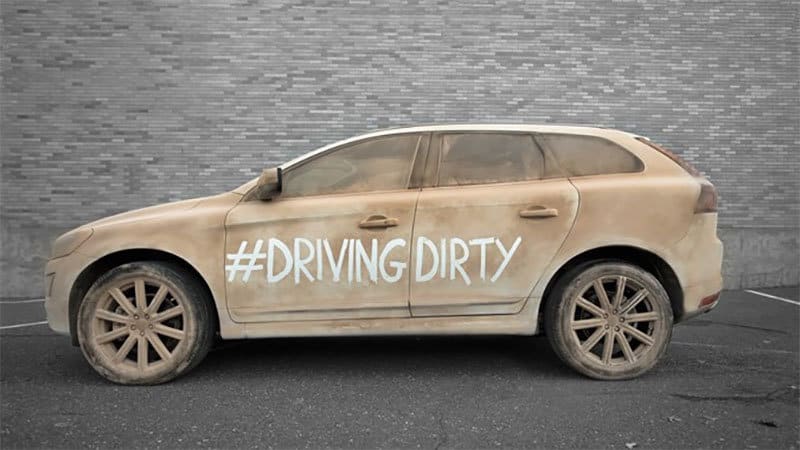Regardless as to whether you prefer planes and trains, or boats and automobiles, we all rely upon modes of transportation to get from one place to another.
Despite their differences, all four of these forms of transit are susceptible to corrosion and rust, and yes, there is a difference between these cancerous occurrences.
Over the years, we’ve covered everything from undercarriage rust removal and protection tips, to discussing the side-effects of road salt and de-icing sprays. But for whatever reason we have yet to tackle the topic of aluminum pitting and corrosion… until now.
In the following sub-sections, we will cover the common causes of aluminum pitting and corrosion, as well as a few of our favorite removal and preventative maintenance tips. In order to keep aluminum looking and performing at its best, you have to start somewhere, and a good place to begin is with the right information.

Photo Credit: Micah Wright
Wait… Isn’t Aluminum Supposed to Never Rust?
Balancing strength and lightweight rigidity with rust resistance and ductility, aluminum alloys are modern man’s space-age material.
Today, you can find aluminum in virtually every aspect of daily human life. From automobiles, airplanes, farming equipment, roofing materials, assault weapons, and elevators, to electronics, hardware, appliances, and that can of craft beer you’re sipping… aluminum’s applications are endless.
One of the main reasons for its popularity, is that aluminum does not contain iron, and therefore will never rust. Instead, aluminum is susceptible to something called “corrosion,” which if allowed to fester, can also be quite detrimental.
As aluminum corrodes, it forms lesions on its surface and slowly begins to weaken, much like how a rust-riddled piece of iron slowly becomes brittle over time. While both of these cancers consume metal at a snail’s pace, they are a royal pain in the ass to remove, and can be a challenge to quarantine if allowed to embed in a surface.
Quick Nerd Note: According to a report by Monroe Engineering, aluminum accounts for about 8% of all elements in the Earth’s crust, making it the most readily available metal. Aluminum is also super lightweight, which from a manufacturing standpoint, makes it incredibly easy to transport and manipulate.
So if aluminum won’t rust, why does it corrode?
For the answer to this puzzling question, we turn toward none other than Minnesota-based bolt and hardware specialist, Fastenal, who provides us with the following explanation.
“Corrosion can be thought of as an electro-chemical action in which one metal is changed into a chemical or simply eaten away. When two metals are in contact with each other in the presence of some electrolyte
-Fastenal, the less active metal will act as the cathode and attract electrons from the anode. The anode is the material which corrodes.”
While this nerd jargon will more than likely trigger nods of affirmation from all of the science buffs who are reading this article, those of us who snoozed through chemistry class will likely require an abbreviated version.
In layman’s terms, aluminum pitting and corrosion begins when surface flaws allow contaminants and moisture to creep into crevices. Like many other materials, aluminum is only as strong as its weakest link, so when pitting forms in a particular area, it will eventually spread both outward and inward if not neutralized and/or removed.
Quick Nerd Note: Aluminum alloys naturally form a smooth layer of surface oxidation measuring anywhere from 0.001 to 0.0025 of an inch in thickness. This oxidized outer layer is not detrimental to the alloy, as it forms a shell-like barrier that prevents pitting from forming.

Photo Credit: Micah Wright
Is there a way to prevent aluminum from pitting and corroding?
Fortunately, there are several ways of protecting an aluminum surface from the damages associated with pitting and corrosion.
On of the more common methods of protecting aluminum is the use of clear coating, where a protective layer is pre-installed at the factory. While these materials and techniques may vary from the clear coat adorning your automobile, both products ultimately serve the same purpose.
Unfortunately, factory clear coatings are not a permanent solution, and over time they can become prone to premature failure.
One of the reasons for this, is that many aluminum components experience routine levels of abuse amid moisture-rich environments. This is precisely why a vast majority of today’s aluminum products come finished in an anodized coating.
The Pros and Cons of Anodized Aluminum
While a brief paper on the subject of anodization by TECH-FAQ certainly shines some light on anodized aluminum’s pros and cons, our nerdy asses decided to dig a bit deeper.
Eventually, we stumbled upon a paper published by commercial-grade alloy coating specialist, Silcotek. In its findings, Silcotek not only discuses the causes of aluminum pitting and corrosion, but delves into the reasoning behind the need for anodization.
According to scientists well-versed in the subject, anodization drastically changes the texture of an aluminum alloy, giving it a far more porous surface, which in turn allows subsequent protective and/or pigmented coatings to adhere to the metal. Not only does anodization prevent cracking and peeling, but its oxide layer remains completely undetectable by the naked eye.
“The most practical and effective means of protecting against corrosion involves finishing surfaces with an appropriate protective coating. For aluminum alloys, the coating system usually consists of a surface to which a corrosion-inhibiting primer is applied. In recent years it has become common practice not to seal the anodized layer. Although this reduces the corrosion resistance of the anodized layer, the primer adheres better to the unsealed surface. As a result, it is less likely to chip off during manufacture and service, producing improved system performance. ”
--boeing
But anodizing also has its weaknesses, with its very conception being its biggest enemy.
Unlike titanium, iron, and stainless steel, aluminum becomes drastically weakened once temps surpass the 212° Fahrenheit (100° Celsius) mark, a core function in the anodization process. And while anodized aluminum’s porous surface may make it easier to coat, and therefore more resistant to flaking and corrosion, it falters when the heat is on, with a surprisingly low 176° Fahrenheit (80° Celsius) cracking point.
Quick Nerd Note: In its simplest form, the act of anodizing is little more than the exposure of raw aluminum alloy materials to a torturous blend of acid solutions and violent electrical currents. This killer combo forces the aluminum to form hydrogen at its negative electrode (cathode), with oxygen along its physical aluminum surface serving as the positive electrode (anode). While the hydrogen is little more than an aluminum by-product, the oxygen produced is transformed into an aluminum oxide, which in essence, is the basis for anodization.

Don’t Stress, and Keep Clean
Another common risk to aluminum is a fairly self explanatory term called “stress corrosion cracking,” or SCC for short.
While this form of failure can be found in many metals, aluminum’s downfall is that it tends to corrode quite quickly when foreign elements are combined with abundant amounts of heat and stress. Simply put, if it’s aluminum and it gets dirty, and then gets bludgeoned repeatedly by another object or a pressing force, chances are it will eventually succumb to SCC.
“Pit initiation on multiphase commercial
--Norwegian scientist, Kemal Nişancıoğlualloys occurs invariably at weak spots on the oxide around the intermetallic particles. The weakness results firstly from the presence of a flaw in the oxide at the particle-matrix interface.”
Things like aluminum boat hulls, stamped truck beds, aircraft exteriors, and construction and agriculture equipment are all prone to stress corrosion cracking. This is why routine surface cleaning and inspections on aircraft and watercraft are so crucial, for if left unattended for too long, the structural integrity of a corroded section could render the entire craft unfit for use.
In order to cleanse aluminum surfaces that have been afflicted with “metallic cancer,” most people will either take either one of two approaches. The first, and perhaps most appealing, is a highly acidic, easy-to-make, super affordable, all-natural aluminum oxidation remover of unrestrained awesomeness. While the other favors a far more hardcore form of attack…
The All Natural Aluminum Cleaning Approach
By combining distilled water with either pure lemon juice or white vinegar, and then gently agitating the corroded area with a mild scrubbing pad, most mild cases of aluminum corrosion can be removed.
To create this magical elixir, simply combine a quart of distilled water with two tablespoons of the acidic liquid of your choosing, and stir. With a little bit of elbow grease, ample amounts of exposure time, and a dash of luck, you should be able to remove most garden variety forms of aluminum corrosion.
The Hardcore Chemical Aluminum Scouring Alternative
However, if you feel like something stronger is required, there’s a seemingly endless array of aluminum cleaning chemical products on the market, all specifically engineered for the removal of oxidation on untreated and anodized automotive surfaces.
And while things like non-woven abrasive pads work wonders on corroded anodized aluminum, one must be careful to not damage the metal’s protective film. However, if the anodization does become compromised in some way, a splash of chromic acid or another inhibitive treatment can be used to restore the oxide film.
Quick Tip: NEVER use steel wool, stiff wire brushes, or any other highly abrasive cleaning media on aluminum surfaces. Aluminum is a soft metal, and the last thing you want is to see further pitting and corrosion develop due to careless actions.

How to Protect Aluminum From Corrosion
One way to protect an aluminum surface from corrosion is to store it in a moisture-free, climate-controlled environment. While this may be ideal for something small that is only used occasionally, preventing an entire automobile from coming into contact with rain, humidity, or any other moisture-rich natural element is virtually impossible.
This causes us to circle back to the most widely practiced form of aluminum protection: Clear coating.
While a basic, “rattle can approach” to clear coating can be utilized on smaller aluminum objects, larger surface areas typically require a more potent solution. However, applying a layer of clear coat protection doesn’t always mean spraying invisible paint everywhere.
Clear coating an aluminum surface can also mean applying a layer of ceramic coating. Modern nano ceramic coatings not only protect aluminum alloy from the elements, but they also add depth to painted, powder coated, and anodized surfaces.

Parting Shots
Hopefully this helps explain why thousands of people use a simple coating of Armor Shield IX as a form of protecting their aluminum possessions.
From automotive components and body panels, to boats, bicycles, motorcycles, and more, protecting an aluminum surface has never been easier nor more resilient thanks to the advent of nano ceramic coatings. So give it shot and keep the aluminum in your life from pitting and corroding. Ceramic coating is way easier than you might think…













3 comments
Russell E. Myrick
I like your show and concur with a lot of this data. You kept my consideration all through the entire article. Subsequent to perusing your article I get to find out about how to remove and prevent aluminum corrosion. Thank you.
I like your show and concur with a lot of this data. You kept my consideration all through the entire article. Subsequent to perusing your article I get to find out about how to remove and prevent aluminum corrosion. Thank you.
Moric Kovach
All aluminum needs to corrode is water, oxygen, and time just like any other reactive metal no different than iron and steel. The best we can do for corroded aluminum is to remove the oxidation and seal it from moisture with a plastic coating. A clear coat product designed for automobile paint works well.
All aluminum needs to corrode is water, oxygen, and time just like any other reactive metal no different than iron and steel. The best we can do for corroded aluminum is to remove the oxidation and seal it from moisture with a plastic coating. A clear coat product designed for automobile paint works well.
Joe.b
I have a automobile gear box which has a white powder forming on it being an aluminium/ alloy gearbox . I have brushed off the powder using a plastic bristle brush. How do I prevent it corroding?thanks joe .b.
I have a automobile gear box which has a white powder forming on it being an aluminium/ alloy gearbox . I have brushed off the powder using a plastic bristle brush. How do I prevent it corroding?thanks joe .b.